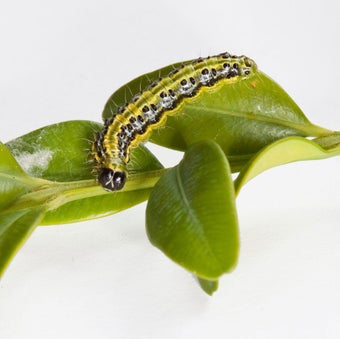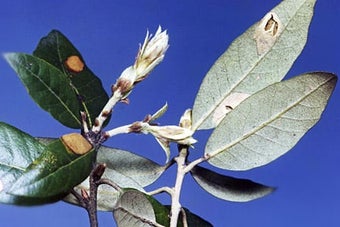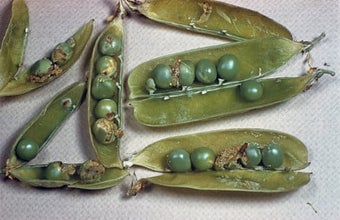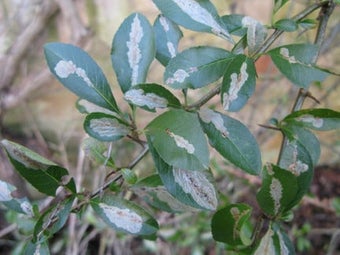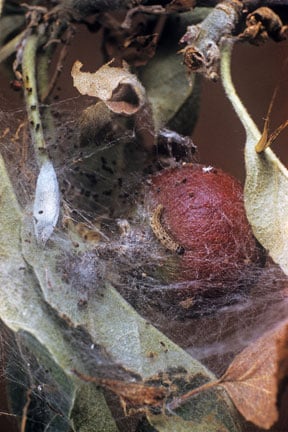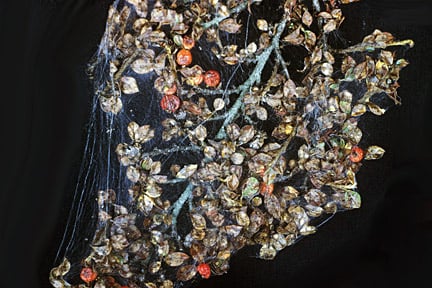
Quick facts
Common names - Hawthorn webber moth and porphyry knothorn moth
Scientific names - Scythropia crataegella and Acrobasis suavella
Plants affected - Mostly Cotoneaster horizontalis and hawthorn but occasionally blackthorn, plums and whitebeam
Main symptoms - Small brown caterpillars feed beneath silk webbing; foliage becomes brown and dries up
Caused by - Caterpillars of two species of moths
Timing - April-June and late July-August
What are cotoneaster webber caterpillars?
Cotoneaster webber caterpillars are the larval stages of two moths: the hawthorn webber (Scythropia crataegella) and porphyry knothorn (Acrobasis suavella). The hawthorn webber moth is the species most often encountered.
Symptoms
Affected plants will show the following symptoms:
- The foliage becomes brown and dried up where small, dark brown caterpillars have grazed away the leaf surface, giving the impression that branches have died, however affected areas will usually produce another flush of leaves and recover
- Hawthorn webber moth larvae cover their feeding area with extensive sheets of fine white silk webbing
- Larvae of the porphyry knothorn moth live inside dense silk tunnels which incorporate leaf fragments and excrement pellets, this can be less obvious than the webbing of the hawthorn webber
- Several other species of moth produce webbing as larvae but these are not found on cotoneaster, in gardens these include box tree caterpillar, brown tail moth and small ermine moths

Management
Whilst the appearance of this insect can be alarming and almost all of the foliage can become covered in webbing and turn brown, the plants usually recover without treatment and so control is not necessary. Additionally, these moths do not usually occur in high numbers year on year, so are unlikely to be a persistent problem.
- Encourage predators and other natural enemies in the garden such as birds
- Inspect plants for signs of webbing and damage in late spring and late summer. If the caterpillars are confined to a few shoots, these can be pruned out
Biology
The life cycles of hawthorn webber and porphyry knothorn moth are similar, with one generation a year:
- Adult moths emerge and lay eggs in July-August
- These hatch into dark brown caterpillars that cause some initial feeding damage and webbing before overwintering as young larvae
- They resume feeding in late spring, when the webbing and damage becomes more extensive and noticeable
- When fully fed in early summer, the caterpillars pupate within the silk webbing
Hawthorn webber moth caterpillars are 12-15 mm long when fully grown and they produce extensive white silk webbing that covers their feeding area. Caterpillars of porphyry knothorn moth are a little larger and stouter than those of the hawthorn webber. They spin greyish-white silk tubes, which incorporate fragments of plant material, along the stems, so the webbing is less obvious than that produced by hawthorn webber caterpillars.





